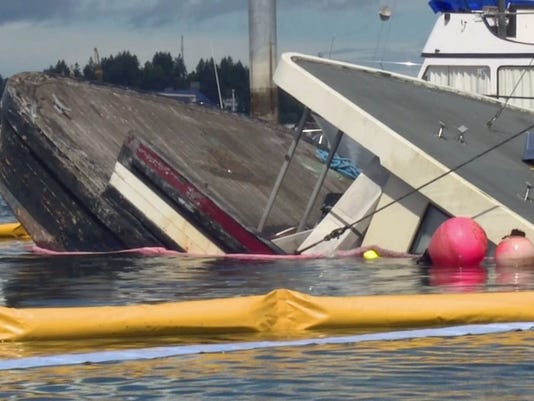
(Photo: KING)
Alex Rozier reports
Alex Rozier, KING 5 News 5:41 p.m. PDT September 2, 2015
PORT ORCHARD, Wash. --
The Coast Guard and the Department of Ecology were working together Wednesday to help clean up an oil spill in Port Orchard.
Around 3:40 a.m. a 70-foot boat sank in Sinclair Inlet. Between the marina staff and the fire department, crews were able to put out an oil spill containment boom and several clean up materials right away.
The Department of Ecology says one of the reasons most of the oil stayed in the marina is because of the response.
The boat is a 70-foot-long wooden vessel that was built as a fishing vessel in 1957. It was later converted to a pleasure craft. The fire department was not able to keep the boat from sinking, so they cut it loose to prevent it from sinking the entire floating dock.
The boat owner chose to not hire a spill response company, so the Coast Guard is forced to pull from the federal oil spill contingency fund. Essentially, as of now, taxpayers are paying for the clean-up. Down the road the owner may be forced to foot part of the bill. The Coast Guard hired Global Diving and Salvage, who has the ability to respond to oil spills and go underwater.
They have two options at this point: 1. They can use special pumps to empty the tanks. 2. Use plugs to close off the air vents from which the oil is floating.
The Department of Ecology admits they are a bit frustrated because they feel this spill could have been prevented. In 2014 this same boat began taking in water, and just a few months ago the DNR offered to remove it from the water because of its poor condition. The Department of Ecology also offered to at least pump out the tank so there would not be a spill. The owner declined their offer.
The consequences include a potential fine, the owner picks up the clean-up costs, and the possibility that a natural resource damage assessment would be done where the owner would be responsible for whatever they determine is the environmental damage.
